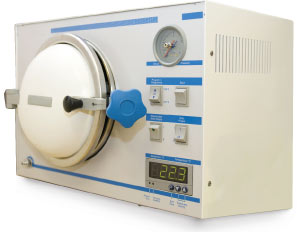Infection Control in the Dental Office
Professional Standards Ensure Your Safety
Dear Doctor,
What precautions are taken to prevent the spread of hepatitis and HIV in the dental office? In short, am I safe?

Dear Michele,
Though once in a great while you will read a news story about an instance of lax infection control, the short answer to your question is a resounding yes; you are very safe from contracting infection in the dental office. Dentists not only have a professional responsibility, they also have a legal, moral and ethical responsibility to prevent infection, and this is not at all hard to do. All healthcare facilities are mandated to practice what are known as “standard precautions” when it comes to disinfection and sterilization control procedures to ensure that all individuals, patients and healthcare providers alike, are protected from the risk of infection. This is especially true for the viruses that cause hepatitis (B and C), and HIV/AIDS. The dental profession has been found to be the most compliant with infection-control procedures.
Preventing Blood-to-Blood Contact
A little background on how blood-borne diseases are transmitted will help to enlighten and inform. The liver is one of the most important organs in the body and performs many critical functions. Hepatitis (“hepat” – liver; “itis” – inflammation) is a liver disease that when caused by the viruses HBV and HCV, can be particularly dangerous. It can result in severe impairment of normal bodily function or even death. HBV and similarly HCV are spread when blood from an infected person contacts blood of another individual via an injection or cut. That's why hepatitis from these viruses is a prominent concern in blood transfusion and surgical centers, and also among intravenous (IV) drug users.
It's the same with human immunodeficiency virus (HIV), a stealthy virus that destroys the body's resistance system causing Acquired Immune Deficiency Syndrome (AIDS). Although spread primarily by sexual contact, it can also be spread by contaminated needles or instruments.
Routine safety precautions are taken in healthcare facilities across the country to prevent transmission of infectious diseases.
The emergence of these blood-borne viral diseases that can be readily transmitted by a needle or an instrument, from an infected to an uninfected person, prompted heightened concern in the late 1980s, when the first cases of AIDS were recognized. However, these diseases are not the only reason for the need for infection control in healthcare today; there are thousands of bacteria, viruses and fungi that can cause infection, especially in those people who have compromised immune systems.
Routine safety precautions are taken in healthcare facilities across the country to prevent transmission of infectious diseases. The Center for Disease Control and Prevention (CDC) recommends disinfection and sterilization protocols and procedures for all healthcare facilities and providers of healthcare. The CDC's latest updated guidelines (2011) comprise a multilayered system designed to ensure the highest possible standards and thus safety across the United States.
Additionally, all healthcare professionals including dentists are mandated to practice these procedures by professional licensing bodies at the state level. It is generally a condition of re-licensure that healthcare professionals update their knowledge through continuing education in this important area every two years. The guidelines are accessible to the public, and are extensive. They cover everything from hand hygiene and use of attire, masks and gloves to cleaning and disinfection of instruments — so that any healthcare procedure can be performed as safely as possible.
Practice Safe Healthcare
With 170,000 dentists in the US, let alone millions of other healthcare facilities across the country, it is not surprising that it becomes big news when one of them defaults on his or her obligations to put safety first — an example of the exception proving the rule. But when you think about it, safety procedures in the dental office are not just about protecting the public, our patients, who are without doubt our most important concern; they are also for the protection of healthcare providers.
As a dental patient, you have the right to information regarding your care, and infection control practices are certainly a big part of that. So if you would like more detailed information, please be sure to ask your dentist. He or she should be happy to put your mind at ease.




